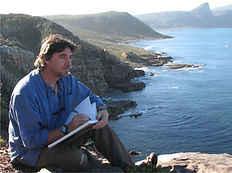Noel Ashton - Mindful Nature
For ourselves, for each other, and for the planet


Morphological Mapping
WHERE SCIENCE AND ART MEET
From scientific journals to educational materials, field guides and clifftop signage, fine art exhibitions to books, sculptures and paintings, Noel’s whales and dolphins have become world recognised for their scientific accuracy and artistic precision, but what is less known is that all of this work is based on over thirty years of dedicated research, with the aim of creating a definitive set of scientific illustrations of the world’s elusive cetaceans.
The story behind Noel’s morphological research

Scientific illustrations of a Common Dolphin Delphinus delphis and a Dusky Dolphin Lagernorenchus obscurus
Illustrative Morphological Mapping was a process that Noel pioneered in the mid-eighties when he was commissioned to create a scientific illustration of the Heaviside's dolphin, an endemic species only found in the Benquela Current ecosystem of southern Africa’s west coast. It was commissioned by Dr Peter Best of the Mammal Research Institute, University of Pretoria, on behalf of the scientific committee of the International Whaling Commission.


Scientific illustration of the Heaviside's Dolphin and the original preparatory sketch for the International Whaling Commission
This was to become the first published scientific illustration in the world of this elusive and little-known species, and formed the foundation for a lifelong research programme to illustrate the world's species using his highly accurate process. The subsequent publication of Noel’s illustrations in scientific journals has given his research international recognition.

Left: Heaviside’s and Dusky Dolphin Scientific Illustration, Middle: Killer Whale Morphological Map, Right: Illustrations of some of the world’s cetacean species

Click here to see Noel's Books on Whales and Dolphins.
Noel explains the process...
When I began illustrating the global species in 1984, the literature at the time showed enormous variability in the quality and accuracy of the available images, so my challenge was to develop a technique that would effectively and seamlessly combine the accuracy of science with the most advanced illustrative processes.



Over many years I developed and refined a technique that enabled me to map the morphological ratios of each of the world’s species in order to gain a very detailed and accurate understanding of each species characteristics – the comparative size of dorsal fins, tail, length, position of eye along the lateral plane, girth, etc. These dimensions were available from researchers around the world who fastidiously collect this data, as well as at stranding events where I could gather the data firsthand (here I was also able to record the subtle colours and blends which disappear soon after death). I then collated this data by establishing the mean data set for each species, as well as the differentials between adults, male and female, and juveniles.

The morphological map of the Killer Whale showing the dorsal profile, the lateral profile with dorsal fin and flipper proportions, the sexual and age variations in dorsal fin and flipper shapes, and the scientific illustrations.
This data was then transcribed into physical maps and schematics which would enable me to begin the process of adding the complex curves which define each species, and only then could the process of illustrating begin. So it was back to the drawing board with all this data, the shape, form, outline, colour and tonal profiles, and all other details so that I could begin the process of actually painting each species, with many of them being done in various life stages, as well as male and female sexual dimorphism.

The airbrush masking technique explained using the dolphin board as an example. The board background is painted, then a mask is applied before an undercoat of black, then multiple layers using multiple masks till all the colours and tones are built up and the painting is complete.

A scientific illustration of an adult Indo-Pacific Bottlenose Dolphin,
Tursiops aduncus showing the complexity of the tonal shading
For these full-colour renderings I developed and refined specific airbrush techniques that enabled me to capture the nuances and gradual tonal and colour blends evident in most cetaceans. After this exhaustive process, each illustration was scanned and digitally archived.


Noel was the scientific consultant on the film Free Willy 4 for Warner Bros. He helped generate the CGI killer whale and supervised the construction of the realistic model.
